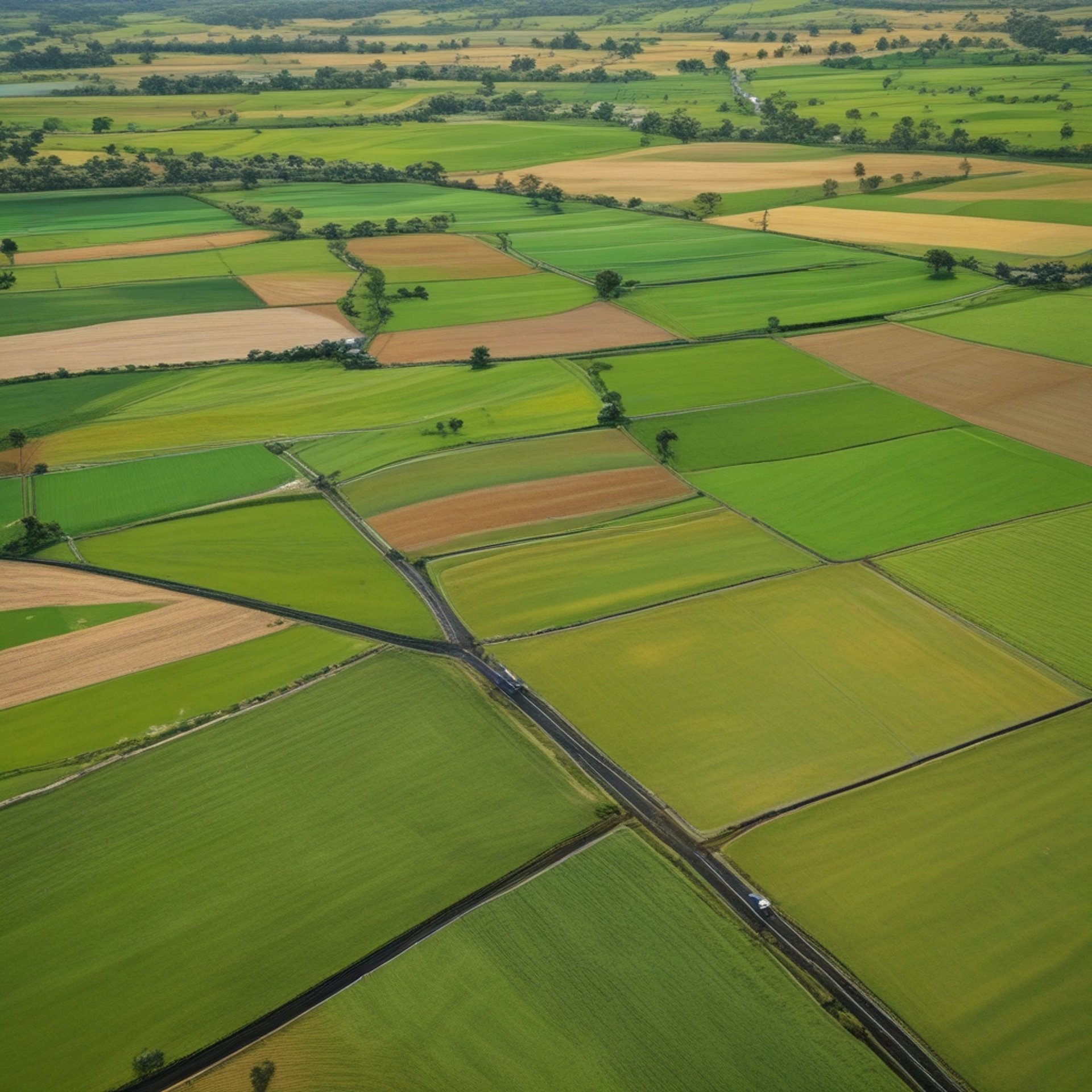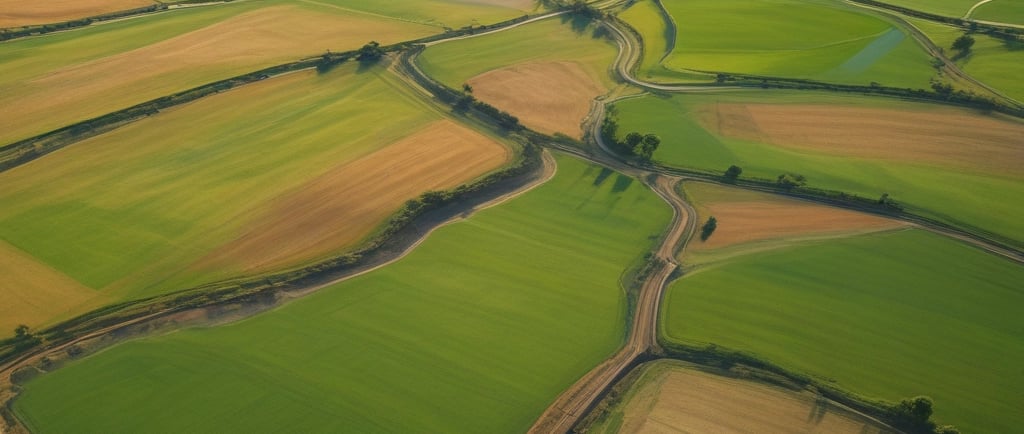🌿 GROWPlantWell – Nurture Nature, Transform Your Space 🌿

Farming Systems in Queensland: Overcoming Challenges with Innovative Solutions
Explore the key challenges faced by Queensland’s farming systems and explore innovative solutions driving sustainable agriculture across the state.
Rashid Saleem
8/8/20253 min read


Queensland’s Diverse Farming Landscape
Queensland’s vast and varied landscape supports a wide range of farming systems—from intensive cropping in the Darling Downs to cattle grazing in the extensive rangelands of the west. This diversity contributes significantly to Australia’s agricultural output but also presents unique challenges.
Farmers across Queensland face challenges including climate variability, soil health issues, water scarcity, pest pressures, and market fluctuations. Addressing these challenges with innovative, locally adapted solutions is crucial to sustaining productivity and profitability.
Overview of Farming System Shares in Queensland
Queensland’s agriculture is diverse, with each farming system contributing differently to the state’s economy and landscape:
1. Broadacre Cropping Systems
Main regions: Darling Downs, Central Highlands, Goondiwindi, Burdekin, Atherton Tablelands.
Major crops:
• Summer crops: sorghum, maize, sunflower, mung bean, soybeans, cotton.
• Winter crops: wheat, barley, chickpea, faba bean.
Farming methods:
• Conventional tillage and zero/minimum till systems.
• Mixed cropping–livestock enterprises.
• Irrigated and dryland production.
2. Sugarcane-based Systems
Main regions: Coastal north and central Queensland — Burdekin, Mackay, Innisfail, Mossman.
Features:
• Monoculture or rotation with legumes (soybean, mung bean) to improve soil fertility.
• Irrigation in dry periods (especially in Burdekin).
• Mechanised planting, harvesting, and transport to nearby mills.
3. Horticultural Systems
Main regions: Tropical fruit: Far North Queensland (mangoes, bananas, papaya, lychee, rambutan).
• Temperate fruit & vegetables: Granite Belt, Lockyer Valley, Bundaberg, Atherton Tablelands.
Special features:
• High-value crops often under irrigation.
• Intensive pest and disease management (e.g., fruit fly control).
• Protected cropping (greenhouses, netting).
4. Grazing-based Livestock Systems
Beef cattle: Extensive grazing in western and northern Queensland (Mitchell grass downs, Brigalow country).
• Breeds include Brahman, Droughtmaster, Santa Gertrudis, Angus.
• Breeding, backgrounding, and feedlot finishing systems.
• Sheep and goats:
• Limited mostly to western and southern downs; wool and meat production.
5. Mixed Farming Systems
• Integrated cropping and grazing.
• Benefits: diversified income, better use of crop residues for stock feed, improved soil fertility via pasture phases.
6. Irrigated Farming Systems
Found along major river valleys and irrigation schemes (Burdekin, Dawson, St George, Emerald).
• Crops: cotton, rice, lucerne, vegetables, tree crops.
• Systems: furrow, centre-pivot, drip irrigation.
Economic and Regional Insights
The grazing sector is the largest contributor to Queensland’s agricultural GDP, followed by cropping and horticulture.
Regional variations are significant: the tropical north focuses on sugarcane and horticulture, while the south and west have more broadacre cropping and cattle grazing.
The shift towards mixed farming systems is growing as farmers seek to improve resilience and optimise resource use.
Challenges Facing Queensland Farming Systems
1. Climate Variability and Extreme Weather
Frequent droughts, floods, and cyclones disrupt production cycles.
Increasing temperatures affect crop yields and pasture growth.
2. Water Scarcity and Management
Competition for water resources between agriculture, urban use, and the environment.
Need for efficient irrigation technologies and water-saving practices.
3. Soil Degradation
Erosion, salinity, and nutrient depletion threaten long-term productivity.
Managing soil health is vital for sustainable yields.
4. Pest and Weed Pressure
Invasive weeds like parthenium and buffel grass compete with pastures and crops.
Pests such as locusts and diseases threaten crop and livestock health.
5. Market and Economic Pressures
Fluctuating commodity prices and global trade uncertainties impact farm income.
Rising input costs for fuel, fertilisers, and equipment.
6. Labour and Skills Shortages
Difficulty attracting skilled workers to rural areas.
Need for ongoing training to adopt new technologies.
Solutions Driving Sustainable Farming in Queensland
1. Climate-Resilient Farming Practices
Adoption of drought-tolerant crop varieties and improved pasture species.
Climate-smart practices like rotational grazing and cover cropping to protect soil and improve moisture retention.
2. Efficient Water Use and Irrigation
Use of drip and precision irrigation systems to reduce water waste.
Water storage and recycling projects tailored to regional needs.
3. Soil Health Management
Integrated nutrient management and organic amendments to restore fertility.
No-till and minimum-till farming to reduce erosion.
4. Integrated Pest and Weed Management
Use of biological controls and targeted herbicide application.
Community weed management programs to control invasive species.
5. Market Diversification and Value-Adding
Exploring niche markets and direct-to-consumer sales.
Investing in on-farm processing and branding to increase returns.
6. Technology and Innovation Adoption
Precision agriculture tools such as GPS-guided machinery and drones.
Remote sensing for early pest detection and crop monitoring.
7. Education and Workforce Development
Extension services providing training in new farming methods.
Programs encouraging youth and women’s involvement in agriculture.
Frequently Asked Questions (FAQs)
Q1: What are the main farming systems in Queensland?
Queensland’s main systems include cropping (cereals, cotton, horticulture), grazing (beef cattle), and mixed farming combining crops and livestock.
Q2: How does climate variability affect Queensland farmers?
Droughts, floods, and heat stress impact crop yields and pasture growth, requiring adaptive management and resilient farming practices.
Q3: What technologies are Queensland farmers using to manage water scarcity?
Farmers adopt precision irrigation, water recycling, and drought-resistant crop varieties to improve water efficiency.
Q4: How are pests and weeds controlled in Queensland farming systems?
Integrated pest management combining chemical, biological, and cultural methods is used to control pests and invasive weeds.
Q5: What support is available for farmers to adopt new technologies?
Government extension programs, research institutions, and industry groups provide training and resources.
Building a Resilient Future for Queensland Agriculture
Queensland’s farming systems face complex challenges, but innovative solutions grounded in local knowledge and technology are paving the way for sustainable, productive agriculture. By embracing climate-smart practices, efficient resource use, and continuous learning, Queensland farmers can thrive despite uncertainty — securing food production and rural livelihoods for generations to come.